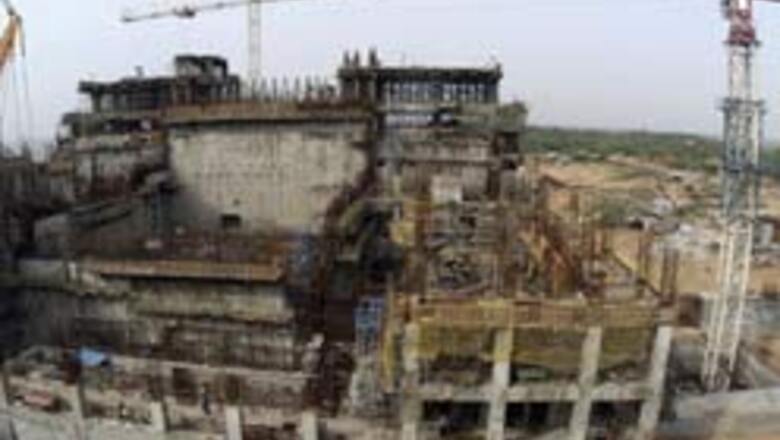
views
Chennai: One of the spin offs of the India-US civil nuclear deal coming through will be the creation of 100,000 new jobs for the 30-odd reactors that India hopes to set up to meet its nuclear power deadline of 20,000 MW by 2020, experts say.
Congress MP Rahul Gandhi highlighted the fillip the deal is expected to give to employment generation and the energy sector. Interacting with students of Ravindra Bharati in Hyderabad on Saturday, Gandhi said: "The nuclear deal means millions and millions of jobs, and lights in the houses of the poor in this country."
Union Minister of State for Commerce and Power Jairam Ramesh, visiting the Department of Atomic Energy (DAE)'s Kalpakkam campus in Tamil Nadu, said: "Nearly 10,000 MW of nuclear power would be generated from indigenous reactors, 8,000 MW from light water reactors and 2,000 MW from Fast Breeder Reactors (FBR)."
Thousands of engineers, technicians and scientists would be needed to run these establishments, he underlined.
"India's 17 nuclear reactors have the capacity to generate 4,120 MW, but in 2007 they could produce only 1,800 MW due to lack of fuel," Ramesh said.
By 2020, India is likely to import six light water reactors while six nuclear plants are under construction to beef up generation capacity, said Nuclear Power Corporation of India Ltd Technical Director S A Bhardwaj.
The total expansion is valued at nearly $300 billion.
"India's Department of Atomic Energy employs about 70,000 experts today," M R Srinivasan, former chairperson of the Atomic Energy Commission, said at a function in Kalpakkam.
The new nuclear power plants on the cards are expected to create at least a 100,000 new jobs in India, experts say.
PAGE_BREAK
Not just in India, the nuclear deal is expected to give a fillip to the industry in the US also.
In 2007, Ron Somers, president of the US-India Business Council, supporting the Indo-US Nuclear Cooperation Agreement, said: "The deal would create 27,000 high-quality jobs a year for the next 10 years in the US nuclear industry."
To strengthen research at universities, the DAE is providing grants for projects through the Board of Research in Nuclear Sciences. The DAE Graduate Fellowship Scheme for the Indian Institutes of Technology (IITs) has been in place since 2002 to promote collaborative research through postgraduate students.
IIT-Kanpur offers a course in nuclear engineering and technology, now IIT-Madras has also decided to offer a similar course from the 2009 academic session. The country's premier institute for nuclear studies and research - The Homi Bhabha National Institute - will provide the necessary guides and teaching staff.
India has two hubs for advanced studies in nuclear technology - Mumbai and Kalpakkam. The Mumbai-based Bhabha Institute unifies 10 institutions, four premier centres and six autonomous institutes, each with a research-driven framework.
Bhabha Institute also includes DAE's top research institute, The Bhabha Atomic Research Centre where old horses of the '80s, the Cirus and Dhruva reactors, are still kept going. DAE's other research institute is the Indira Gandhi Centre for Atomic Research (IGCAR), which was set up in 1971.
"The IGCAR has an open door policy for any student keen on science," says institute director Baldev Raj.
"The IGCAR has tried to strike a balance between networking with institutions with expertise and collaborating with academia for harvesting fresh thoughts," he added.
According to the Nuclear Energy Institute, 30 countries worldwide are operating 439 reactors for electricity generation and 34 new nuclear plants were under construction in 14 countries.




















Comments
0 comment